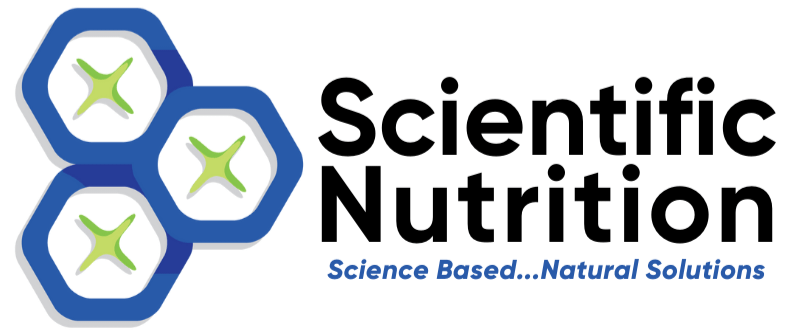Hair Analysis in Diagnosed Hashimoto’s Disease & Thyroid Dysfunction
Hashimoto’s disease silently disturbs the delicate balance of your body’s hormonal harmony. According to American Thyroid Association (ATA), Hashimoto’s affects an average of one in 50 people in America. You can not ignore its significant consequences on thyroid function.
When the immune system turns against the thyroid, inflammation happens, which leads to thyroid dysfunction. Fatigue, weight gain, hair loss, and brain fog are just the tip of the iceberg. But many fail to realize that behind the scenes, a complex interplay of hormones and regulatory mechanisms is at play. This complex interplay influences the overall function of the thyroid gland.
Measuring Thyroid-Stimulating Hormone (TSH) levels is common in diagnosing thyroid disorders. It only provides a narrow snapshot of thyroid function. A comprehensive assessment is necessary to understand the thyroid’s state completely.
It requires a holistic approach that examines the inter-dependencies of various hormones, minerals, and trace elements. For a complete analysis, Hair Analysis comes in helpful in so many ways. It provides a deep inspection of the body’s internal chemistry. It explores the complex relationship between Hashimoto’s disease and thyroid function.
This article will provide you with a complete overview of Hashimoto’s disease, Hair Analysis, and its role in Hashimoto’s and thyroid function.
What is Hashimoto’s Disorder and How Does this Occur?
Hashimoto’s disease was named after the Japanese physician Dr. Hakuru Hashimoto who first described it in 1912.
Hashimoto’s disorder occurs when your body makes antibodies that attack the thyroid gland. Simply put, it’s like your body’s immune system mistakenly (and automatically) identifies the thyroid tissue as a foreign invader. And then launches an attack against its own cells.
In this way, the cells and antibodies typically protect our body against infections and become the strayed protagonists. The thyroid gland becomes inflamed, triggering a vicious cycle of cell damage and disruption in hormone production.
The thyroid gland struggles to produce sufficient hormones as the autoimmune storm increases. This leads to a condition called hypothyroidism. The lack of thyroid hormones slows down various bodily processes, giving rise to an array of exhausting symptoms that can impact daily life.
Symptoms of Hashimoto’s Disease
Hashimoto’s symptoms are far beyond the classic signs of hypothyroidism. Fatigue, weight gain, and sensitivity to cold are frequent symptoms, but this complex disorder can display in various ways.
Here are some common symptoms;
- Fatigue
Hashimoto’s victim will constantly feel exhausted with low energy levels. The condition will be the same even after getting sufficient sleep.
- Brain Fog
Many individuals with Hashimoto’s experience cognitive difficulties. This is commonly referred to as “brain fog” but individuals don’t realize it is related to their thyroid. It feels like ongoing mental sluggishness.
- Cold sensitivity
Hashimoto’s affects the body’s temperature regulation, making individuals more sensitive to cold temperatures. They may feel excessively freezing, even in mild weather. Until your body’s thermostat is corrected, the flame just keeps dissipating.
Side note; The ratio of Hashimoto’s disease (aka Hashimoto’s thyroiditis) is abundant in women. Middle-aged people usually get more affected than others.
Now, it’s time to understand the thyroid gland, its hormone functions, and how hair analysis can save you.
The Complexities of Thyroid Function
The thyroid gland is a small butterfly-shaped organ located in the front of the neck. It is responsible for hormonal equilibrium in your body.
Primarily, it produces two essential hormones: thyroxine (T4) and triiodothyronine (T3).
T3 and T4 regulate the metabolism, energy production, and overall functioning of various organs and tissues. The stage management of T3 and T4 is done through a delicate feedback loop known as the thyroid axis.
When the body requires more thyroid hormones, the hypothalamus releases Thyrotropin-Releasing Hormone (TRH). TRH signals the pituitary gland to produce Thyroid-Stimulating Hormone (TSH).
TSH stimulates the thyroid gland to release T4 and a smaller amount of T3.
You can imagine how much balance and preciseness are required to maintain a proper thyroid function. An autoimmune attack on the thyroid gland hampers its ability to produce adequate hormones, disrupting the thyroid axis’s balance. A simple virus can trigger it to self-attack for up to a year until it recognizes there is no offender.
How is all this hormonal mystery related to hair analysis? You must be thinking.
Here we go!
Correlation between thyroid function and Hair Analysis
Hair analysis in the context of thyroid function is just like a window. Professionals and individuals can have a holistic glimpse of mineral imbalances intricately linked to Hashimoto’s disease.
Research has shown that individuals with Hashimoto’s often exhibit lower levels of selenium and iodine in their hair samples. These two minerals are exclusively responsible for hormonal functions.
Selenium deficiency can impair the conversion of T4 to the active T3 hormone, contributing to the development of hypothyroidism. Iodine deficiency compromises the production of thyroid hormones, worsening thyroid dysfunction.
Healthcare professionals can gain valuable insights into the underlying factors fueling Hashimoto’s disorder by detecting these specific mineral imbalances through Hair Analysis.
Deficiencies or Excesses of Certain Minerals Affect Thyroid Function
Hair analysis is not limited to just measuring selenium or iodine.
It helps to discover other mineral imbalances that can impact thyroid function. Heavy metals like mercury, cadmium, or lead are directly associated with thyroid dysfunction. Hair Mineral Analysis can show you the imbalance of heavy metals within your body’s deepest level.
Imbalance quantities of other minerals like zinc or iron can hamper thyroid hormone synthesis and further aggravate the symptoms of hypothyroidism. Hair analysis, with its ability to highlight these imbalances, aids in developing personalized protocol strategies that target the root cause of thyroid issues.
Hair Mineral Analysis is correlated with the clinical symptoms of thyroid dysfunction. Call it the prime benefit of Hair Analysis as it is related to mineral imbalances with clinical symptoms of thyroid dysfunction.
It means that if Hair Analysis indicates low levels of selenium and iodine, the patient may experience fatigue, weight gain, and hair loss—common manifestations of hypothyroidism. By drawing connections between the Hair Analysis results and the patient’s symptoms, health care practitioners can tailor supplement and detox plans more effectively, aiming for symptom relief as well as improved overall thyroid function.
Hair Analysis Process for Hashimoto and Thyroid Function
The whole process contains three simple steps.
- Consultation and Hair Sample Collection
- The process begins with a thorough consultation with a healthcare professional specializing in thyroid disorders. The client’s medical history, symptoms, and concerns are carefully reviewed to effectively guide the Hair Analysis process.
. - A small hair sample, usually taken from the back of the head, is collected. Then it is sent to Analytical Research Labs, Inc., a reputable and founding company for Hair Analysis.
.
- Preparation for analysis
- In the laboratory, the hair sample undergoes meticulous laboratory analysis to accurately measure mineral and trace element levels plus cellular glucose, overall inflammation, thyroid function, adrenal burnout, etc.
. - The lab then generates a comprehensive report detailing the patient’s mineral status.
.
- Result’s Interpretation and Diagnosis of Hashimoto’s Disease
- I then interpret the Hair Analysis results. At this point, I consider the client’s specific condition, including Hashimoto’s disease and its related symptoms. The correlations between mineral imbalances and thyroid function are carefully examined to develop a customized plan for overall correction.
- An individualized plan is devised after an intense analysis of the results. This plan may include targeted mineral supplementation, specific dietary adjustments, lifestyle changes, to decrease medical interventions in supporting the thyroid function and managing Hashimoto’s effectively.
Bottom Line
Hashimoto’s disease and thyroid dysfunction are among the most significant health challenges. When your immune system falters due to thyroid dysfunction, how can you anticipate vibrant well-being?
The consequences ripple through your lifestyle, affecting your health physically, emotionally, and mentally. Amidst the chaos, Hair Analysis emerges as the super holistic tool, cracking the mysteries of mineral imbalances that conventional tests might overlook. It is far more helpful and detailed in the thyroid process than other traditional tests.
How amazing is it that your beautiful locks and a small snip of hair can give you answers and solutions to your health concerns?
LET’S CHAT about your health goals!
Copyright Scientific Nutrition, LLC 2023




